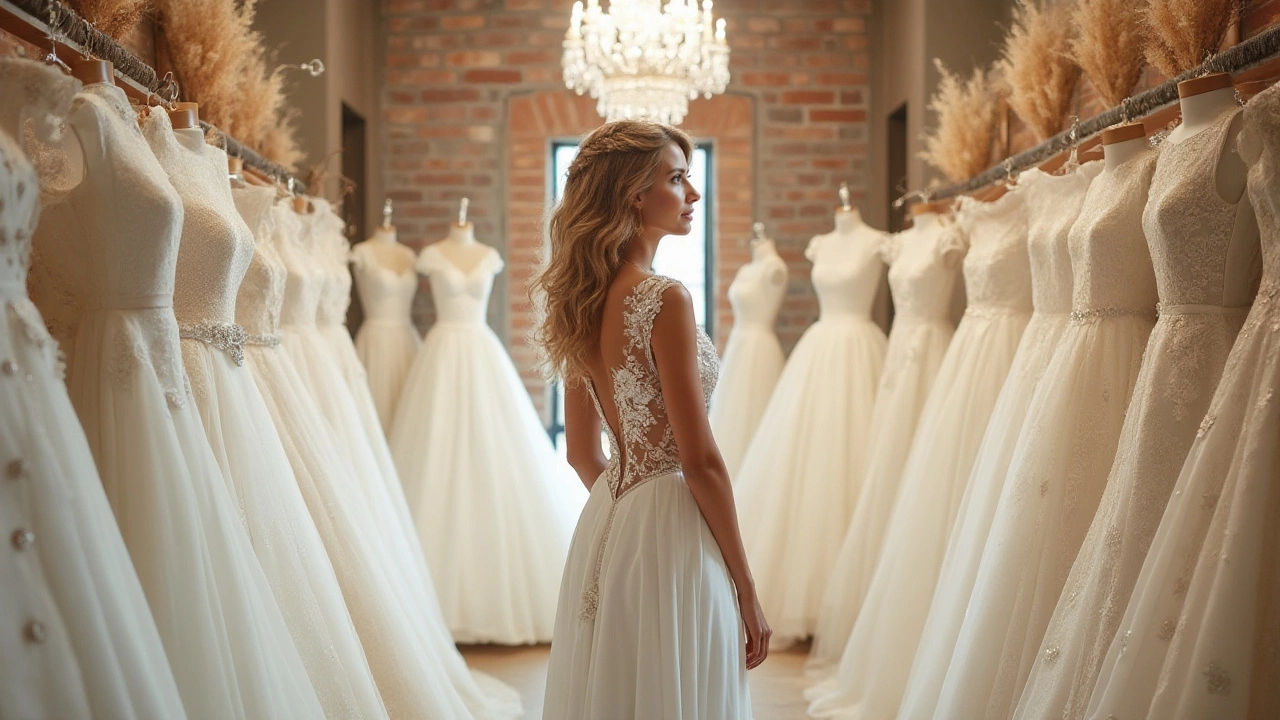Wedding Dress Cost: What to Expect and How to Budget
Walking down the aisle in a dress you love should feel amazing, not scary. One of the biggest questions brides ask is, "How much will my dress cost?" The answer isn’t a single number – it depends on fabric, design, designer, and where you buy it. Below we break down the main cost drivers, give you realistic price brackets, and share tips to keep your spend under control.
What Determines the Price of a Wedding Dress?
First, think about the material. Silk, satin, and lace are pricey because they require careful handling. A simple organza dress can be half the cost of a full‑lace ballgown. Next, look at the design details. Hand‑sewn beading, embroidery, and custom layers add labor time, which bumps up the price. A ready‑to‑wear dress from a high‑street retailer might start at £500, while a couture piece from a famous designer can top £5,000.
Don’t forget the extras. A veil, veil accessories, and under‑garments are usually sold separately. A basic veil can be £50, but a hand‑crafted net veil with crystal detailing can cost £800. Alterations are another hidden expense – most boutiques charge £100‑£300 for fitting adjustments, especially if you need structural changes.
Typical Price Ranges and Budget Tips
Here’s a quick guide to help you set a realistic budget:
- Budget friendly (under £1,000): Look for sales, sample dresses, or online marketplaces. Many boutiques have off‑season discounts up to 70%.
- Mid‑range (£1,000‑£3,000): You’ll find quality fabrics and some designer touches. Consider renting a dress – rental fees often cover cleaning and alterations.
- Luxury (£3,000+): Custom couture, hand‑crafted details, and top designers live in this tier. If you’re set on a designer gown, allocate extra funds for alterations and accessories.
To stretch your budget, try these tricks:
- Shop second‑hand or consignment stores – you can get a barely‑worn designer dress for a fraction of the price.
- Choose a simpler silhouette and let accessories do the work. A plain dress paired with a statement veil or jewellery can feel high‑end.
- Plan your alterations early. The sooner you book fittings, the less likely you’ll face rush fees.
Remember, the dress is just one piece of the wedding puzzle. If you set a clear limit for dress spending, you’ll have more room for other priorities like photography or venue upgrades.
Finally, keep a spreadsheet of all dress‑related costs – dress, veil, alterations, and cleaning. Seeing the numbers on paper makes it easier to stay on track and avoid surprise expenses.
With these insights, you can walk into a boutique confident about what you’ll pay and how to keep the cost in check. Happy dress hunting!
Is $3000 Reasonable for a Wedding Dress? Unveiling Costs and Choices
Determining whether $3000 is a reasonable price for a wedding dress involves understanding various factors including designer brands, quality of materials, custom fittings, and current trends. While some brides may splurge on a luxury gown, others might prioritize a budget-friendly option without sacrificing style. This article explores the wide spectrum of bridal gown costs, offers tips for budget-conscious shopping, and delves into how cultural and personal values influence spending on the perfect dress.
Read more